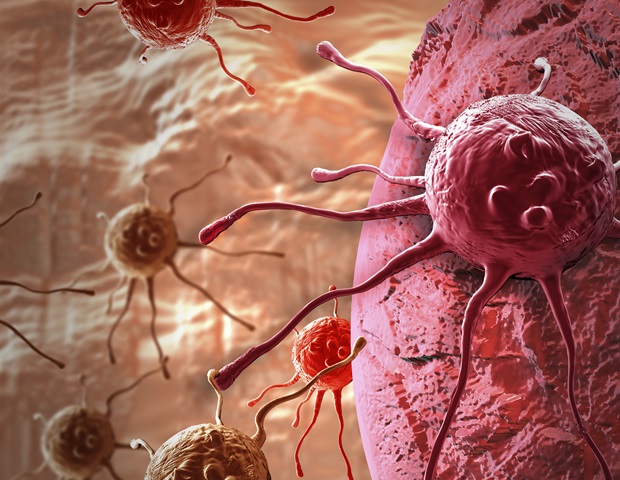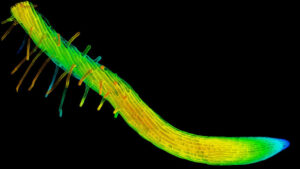
As cancer cases surge globally, the complexity of the disease continues to challenge advancements in diagnosis and treatment. In this evolving landscape, artificial intelligence (AI) emerges as a pivotal tool, offering new avenues for predicting and detecting cancer. A groundbreaking AI tool, developed collaboratively by Brazilian and Polish researchers, promises to enhance these efforts by predicting tumor aggressiveness through protein markers.
This innovative machine learning model can assess the aggressiveness of certain tumors by identifying specific proteins, generating a stemness index that ranges from zero to one. A score of zero indicates low aggressiveness, while a score of one suggests high aggressiveness. As the index rises, the cancer tends to become more aggressive, more resistant to drugs, and more prone to recurrence.
Understanding the Stemness Index
The stemness index reflects how closely tumor cells resemble pluripotent stem cells, which have the potential to transform into nearly any cell type within the human body. As cancer progresses, malignant cells increasingly diverge from the tissue of origin, exhibiting self-renewal and an undifferentiated phenotype.
Researchers developed the tool using data from the Clinical Proteomic Tumor Analysis Consortium (CPTAC), analyzing over 1,300 samples across 11 cancer types, including breast, ovarian, lung, kidney, uterine, brain, head and neck, colon, and pancreatic cancers. The resulting protein expression-based stemness index (PROTsi) was integrated with proteomic data from 207 pluripotent stem cells, identifying proteins that drive tumor aggressiveness.
Potential for Personalized Cancer Therapy
These findings, published in the journal Cell Genomics, highlight the potential for PROTsi to advance clinical treatment development and personalize cancer therapy. The tool identifies molecules that could serve as targets for new therapies, both general and specific.
“Many of these proteins are already targets of drugs available on the market for cancer patients and other diseases. They can be tested in future studies based on this identification,” explained Professor Tathiane Malta, of the Multiomics and Molecular Oncology Laboratory at the Ribeirão Preto Medical School of the University of São Paulo (FMRP-USP) in Brazil.
Malta, the corresponding author of the study alongside Professor Maciej Wiznerowicz from Poznan University of Medical Sciences in Poland, is supported by FAPESP through the Young Investigators Grant program. Her work has been recognized for promoting women’s participation in science, earning her an award in 2022.
Historical Context and Current Applications
In 2018, Malta was the first author of a study published in Cell, where her team developed a stemness index to measure tumor samples’ similarity to pluripotent stem cells. The earlier model relied on gene expression data, RNA quantification, and DNA methylation from The Cancer Genome Atlas (TCGA). The current model, using CPTAC’s proteomic data, represents an evolution of this work, focusing on proteins as functional molecules applicable to treatment possibilities.
Renan Santos Simões, Malta’s advisor and co-first author of the article, emphasizes the importance of this progress in understanding tumor progression and resistance mechanisms. “Science advances slowly, carefully, and is built by many hands. It’s gratifying to realize that we’re contributing to this process,” says Simões.
Global Implications and Future Directions
On World Cancer Day, the World Health Organization (WHO) highlighted the global cancer burden, noting that 40 people are diagnosed with cancer every minute. A 2023 BMJ Oncology study reported a 79% increase in early-onset cancer incidence among adults under 50 between 1990 and 2019, with a 28% rise in cancer-related deaths.
In Brazil, the National Cancer Institute (INCA) estimates 704,000 new cancer cases annually from 2023 to 2025, with non-melanoma skin cancer, breast cancer, and prostate cancer being the most prevalent.
During validation, PROTsi consistently distinguished between stem and differentiated cells, predicting tumor aggressiveness effectively in several cancers, including uterine and head and neck cancers.
Professor Malta notes that while the model is designed for broad application, it performs better for certain cancers. “We’re making a data source available for future work,” she says. The USP group continues to test additional computational models to enhance predictions.
As researchers delve deeper into the complexities of cancer, tools like PROTsi represent a significant step forward in personalizing treatment and improving patient outcomes. The ongoing research and development in this field hold promise for more effective cancer therapies in the future.






